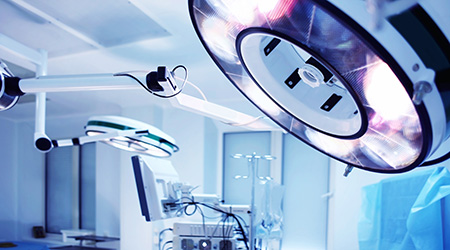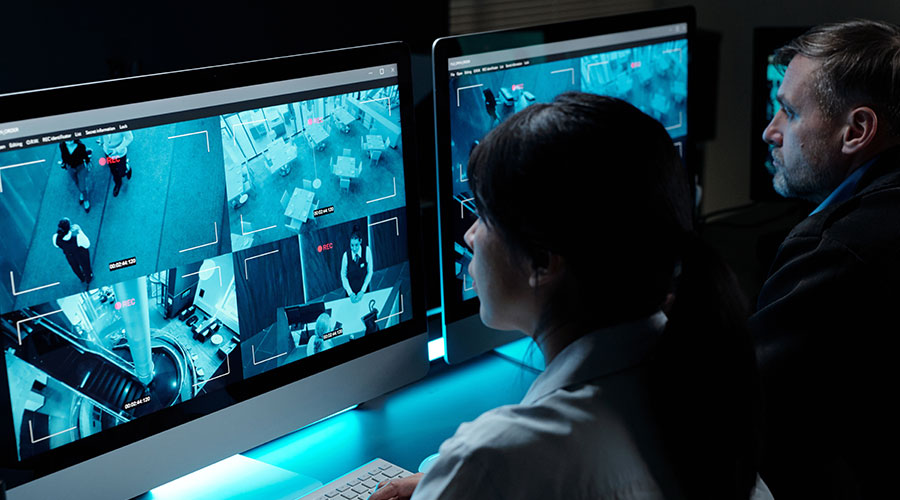Technology in the healthcare sector is constantly evolving, and no section of the hospital is off limits. Medical professionals are looking more closely at the way lighting affects patient care, but that is not its only benefit. In this manufacturer roundtable, Healthcare Facilities Today talks with lighting professionals about the way lighting technology has evolved in recent years and what that means for the future of lighting.
How has lighting technology evolved in recent years?
“UV-C lighting for disinfection began in the water treatment industry in the 1950s. Researchers then discovered the effectiveness on surfaces in both enclosures, such as our Z13, which disinfects high-touch items rapidly, as well mobile units that work on an entire space. More recently, UV-C has become more prevalent and widely used in the air-purification area.”
— Bill Mauzé, President, INVZBL
“The earliest UV-C light air disinfection systems were upper-room fixtures wall-mounted near the ceiling. These were used in tuberculosis patient wards, for example. Today, in-room systems better circulate and disinfect the air while ensuring occupant safety. UV-C light air disinfection works against all current and future variants of COVID-19. It’s another layer of protection recommended by the CDC and ASHRAE in addition to the usual infection-control measures, such as mask wearing. So, healthcare facilities can provide healthier environments for patients and help prevent staffing shortages, as well to be more resilient during this and future pandemics.”
— Jim McMahon, Vice President Sales Americas, Heraeus Noblelight America LLC
“Some of the most notable trends today include the ease of control over LED technology with smooth, flicker-free dimming, the ease of modifying spectral content to align with one’s circadian rhythms, and most recently, the acceptance and progression of UV disinfection technologies throughout many spaces in a healthcare facility. Another key area, brought to the forethought during our current pandemic, is very common to look for features of luminaires and controls that make spaces easy to clean. Some of these features may include ingress protection ratings to make sure that the luminaire is protected from both water and particulate intrusion, and listings to mitigate concerns of material corrosion following regular exposure to chemical cleanings. With disinfection technologies, lighting can now inactivate both viruses and bacteria that may be airborne and/or on surfaces before cleaning staff or a facilities person enters a room, making them feel safer. Another innovative area of focus for lighting in healthcare facilities is with an eye on sustainability. Direct current (DC) electricity can improve the resiliency, reliability, and energy efficiency through the use of microgrid power generation and DC distribution in buildings, healthcare campuses can benefit from both reduced embedded carbon in the building infrastructure, lower installation costs, lower operating costs, and reduced carbon emissions.”
— Tommy Nichols, Architectural Sales Director, Acuity Brands
“In the last decade, UV-C lighting technology has become more efficient, cost-effective, and broadly accepted. In particular, the use of predictive modeling and efficacy software to determine the specific UV-C dose/fluence required to inactivate specific RNA and DNA viruses has been beneficial during the current COVID-19 pandemic. The ASHRAE Epidemic Task Force has established a UV-C dose value of 1,500 µJ/cm2 to attain a 99 percent air inactivation rate for the SARS CoV-2 virus. In practice, however, different environmental conditions — such as airflow speeds, air temperature and humidity levels, lamp aging, and system configuration — influence the strength of the antimicrobial dose. For example, air temperature (cold air reduces the output of UV-C lamps), humidity (high RH decreases pathogen susceptibility to UV-C), and duct reflectivity all play a role in determining the amount of UV-C energy necessary in any given application. That’s why UV-C fixture manufacturers model most installations to help predict individual dosage levels.”
— Dean Saputa, Vice President Sales, UV Resources

 How Healthcare Facilities Can Be Truly Disaster-Resilient
How Healthcare Facilities Can Be Truly Disaster-Resilient TriasMD Breaks Ground on DISC Surgery Center for San Fernando Valley
TriasMD Breaks Ground on DISC Surgery Center for San Fernando Valley Bigfork Valley Hospital Falls Victim to Data Breach
Bigfork Valley Hospital Falls Victim to Data Breach AI-Driven Facilities: Strategic Planning and Cost Management
AI-Driven Facilities: Strategic Planning and Cost Management  Double Homicide Suspect Hides from Police in Upstate Community Hospital
Double Homicide Suspect Hides from Police in Upstate Community Hospital